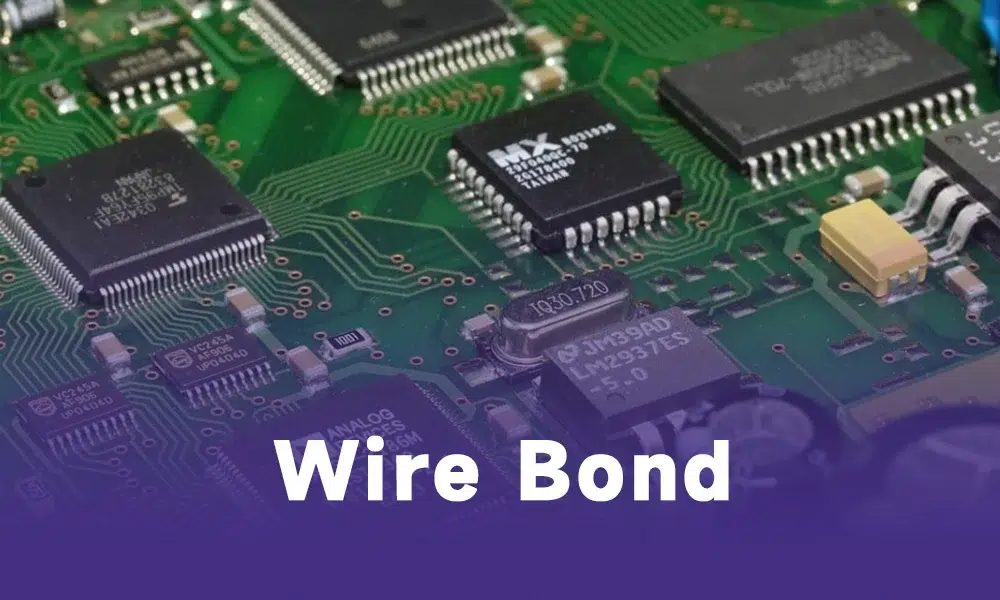A new wave of artificial intelligence continues to explode, and demand for servers and data centers has exploded, driving the accelerated growth of high-performance chips and advanced packaging. There is a strong demand for substitution of downstream packaging substrates, and the IC carrier boards market space has been opened up.
What is an IC carrier board?
IC carrier board is a type of circuit board used to carry chips and is a branch of PCB (Printed Circuit Board). It is used to establish signal connections between IC and PCB. It can also protect circuits, fix lines and dissipate waste heat. Developed on the basis of HDI board (High Density Interconnect Board), it is a technological innovation adapted to the rapid development of electronic packaging technology. It has excellent characteristics such as high density, high precision, high performance, miniaturization and thinness. The complete chip is composed of a bare chip (wafer) and a package (packaging substrate, sealing material, leads, etc.).
What's the type of IC carrier board?
According to the IC packaging method, IC carrier boards can be divided into two categories: Wire Bond (wire bonding) and Flip Chip (flip chip technology).
Wire Bond
Wire Bond (wire bonding) is divided into CSP (chip size package carrier), PBGA (plastic ball grid array package carrier), WBGA (Windows-Ball Grid Array package carrier).
CSP (Chip Scale Package Carrier)
Features: The CSP package is not only small in size, but also thinner, with good operational reliability and fast operation speed.
Usage: communication chips, flash memory chips, logic operation chips, radio frequency module chips, network communication chips, high-end memory chips.
PBGA (plastic ball grid array package carrier)
Features: Good thermal matching, good electrical performance, low cost. However, it is sensitive to moisture and is not suitable for product packaging with air tightness and high reliability requirements.
Purpose: Southbridge chips, graphics chips, network chips, high-end chipsets.
WBGA (Windows-Ball Grid Array package carrier)
Features: Flip-chip soldering method saves about 90% of circuits, reduces power consumption, generates smaller heat sources, has good long-term operation reliability, and fast operation speed, which is conducive to high-frequency and high-speed operations.
Purpose: Memory chips (DDR), used in products with a small number of I/Os, which can reduce the use of gold wires.
Flip Chip

FC-CSP
Features: Simple packaging, the size of the package is equivalent to that of the chip, low cost, chip flip-chip welding reduces the parasitic capacitance of traditional leads, which is beneficial to increasing frequency and improving thermal characteristics.
Purpose: Portable electronic product microcomponents, smart phone CPUs.
FC-BGA
Features: The back of the chip can be exposed to the air and can directly dissipate heat. At the same time, the substrate can also use a metal layer to improve heat dissipation efficiency, or a metal heat sink can be installed on the back of the chip to further enhance the chip’s heat dissipation capability and greatly improve the stability of the chip during high-speed operation.
Applications: Microprocessors and graphics processors, servers, artificial intelligence and network equipment, and high-quality automotive SoCs.
IC carrier board design

What's the difference between IC carrier board, PCB board and chip?
PCB is an important electronic component, a support for electronic components, and a carrier for electrical connections of electronic components. Because it is made using electronic printing, it is called a “printed” circuit board.
Chips, also known as microcircuits, microchips, integrated circuits (ICs), refer to silicon wafers containing integrated circuits. They are small in size and are often part of computers and other electronic equipment.
An integrated circuit is a collective that integrates multiple components. The printed circuit board is the carrier of replaceable surface components. The integrated circuit is an integrated chip welded on the PCB, and the PCB is the carrier of the integrated circuit.
IC carrier board is a circuit board used to carry chips. It is one of the key parts of integrated circuit packaging. Its main function is to provide electrical signal extraction, support, heat dissipation and protection for the chip. The chip is the core of microelectronics technology and one of the most important parts of electronic equipment. It contains a large number of electronic components. PCB is a circuit carrier that is widely used in electronic products to connect and support various electronic components.
What's the functions of IC carrier board?
The main function of the IC carrier boards is to carry the chip and provide support, heat dissipation and protection for the chip. Specifically, the design and manufacturing process of IC carrier boards is for the purpose of achieving multi-pin, reducing the size of packaged products, improving electrical performance and heat dissipation, or multi-chip modularization.
In electronic equipment, the IC carrier boards are the bridge between the chip and the PCB motherboard. It can extract electrical signals from the chip and communicate with other electronic components through line connections.
As the core material of chip packaging, the packaging substrate can protect, fix, and support the chip on the one hand, and enhance the heat conduction and heat dissipation performance of the chip. On the other hand, the upper layer of the packaging substrate is connected to the chip, and the lower layer is connected to the printed circuit board to achieve electrical and physical connections, power distribution, signal distribution, and communication between the internal and external circuits of the chip.











